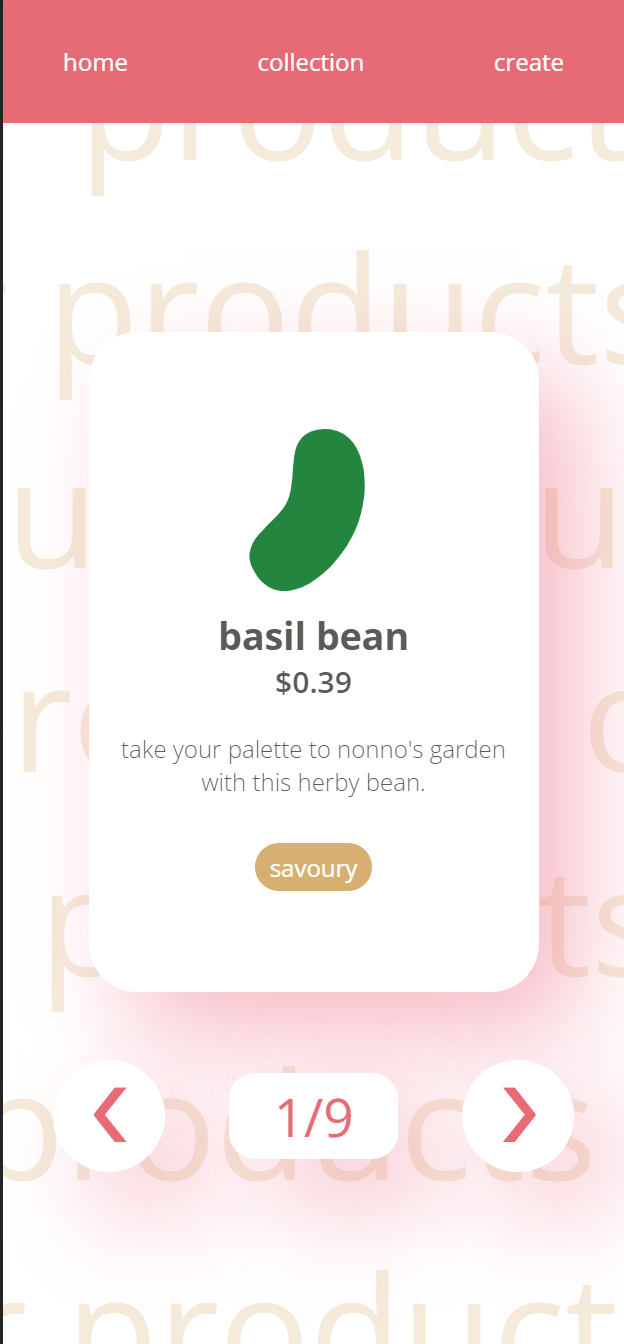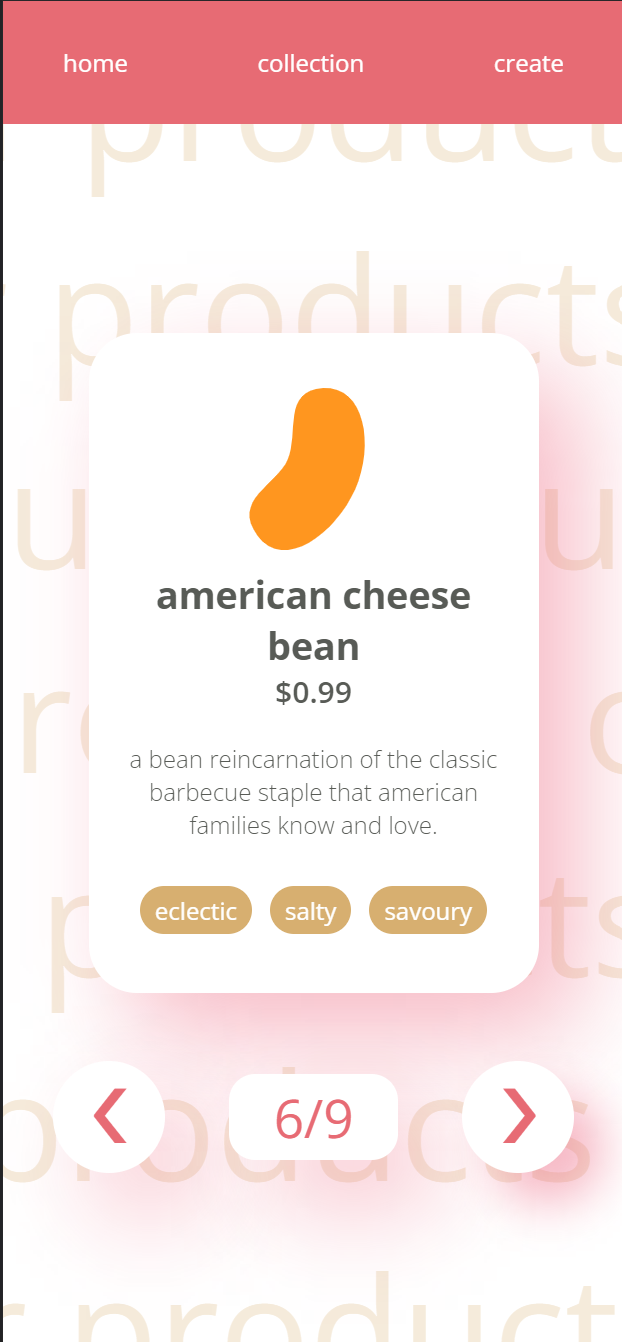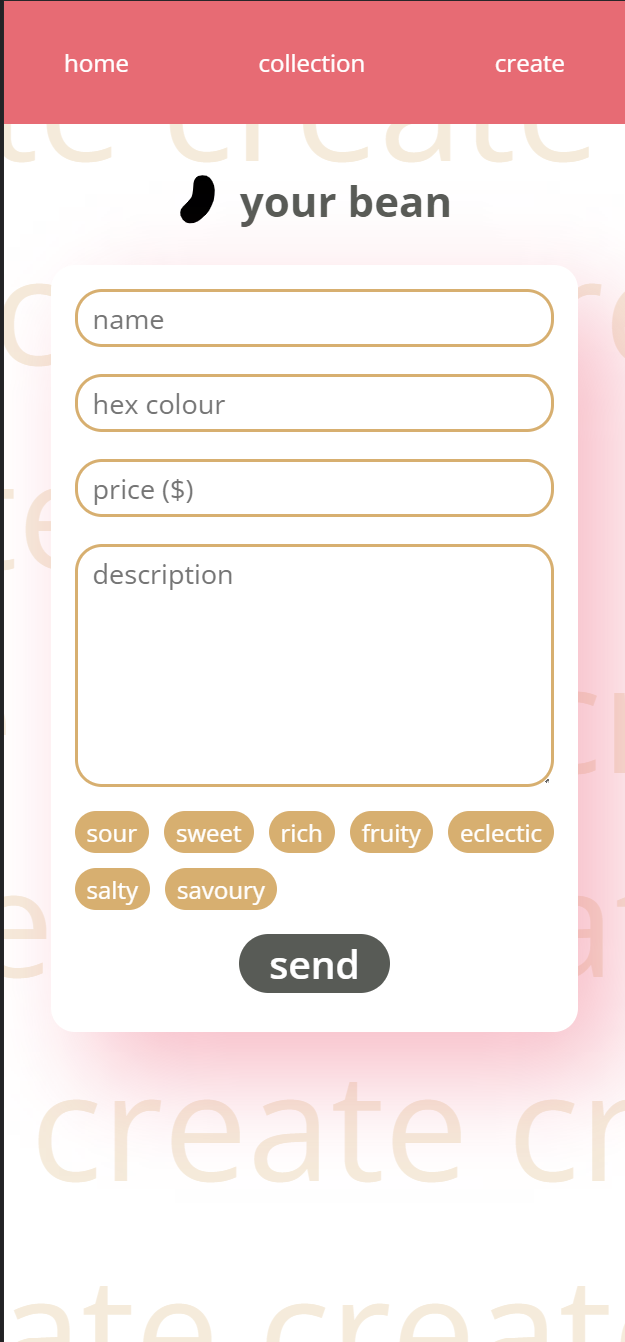A simple full-stack website made to display jelly bean information from a database.
This website allows users to view a simple webpage wherein a selection of jelly beans from an API accessible database is displayed. The user can also use the form on the "create" page to add their own jelly beans to the collection.
The on sale property of each bean can only be set through the Django administrator page.
The home page displays the collection logo and shows the navigation menu across the bottom of the screen.
The collection page displays all the beans in the collection through a sliding carousel. Users can navigate left and right, and see how many of the total beans they've looked through via the display underneath the carousel.
Users are invited to add their own beans to the collection! Beans require a name, colour, price and a short description. Users can also add tags to their beans to describe what categories they belong to. Categories are pre-determined.
Notably, the bean icon next to the text your bean changes colour as the user inputs their desired bean colour
in hex format.
- HTML
- CSS
- React
- Django
- Django REST Framework
Currently, only a mobile view of the website is visible.
Additionally, this application makes use of the hash router because it was a simple fix for the URLs, and routing was not the main focus of this project.
Finally, the API does have additional functionality not yet used in this project (the ability to fetch single beans' data using an ID in the URL, and also a getRoutes URL that shows a list of endpoints). This additional functionality was added in case I wanted to use it later on.
The project requires npm install and npm build to be run in the ./frontend directory. This will create the
build that will be hosted by Django.
Additionally, a secretkey.py containing the Django secret key must be created in ./beanO. The secret key will be a
string stored in a variable called secret_key.




